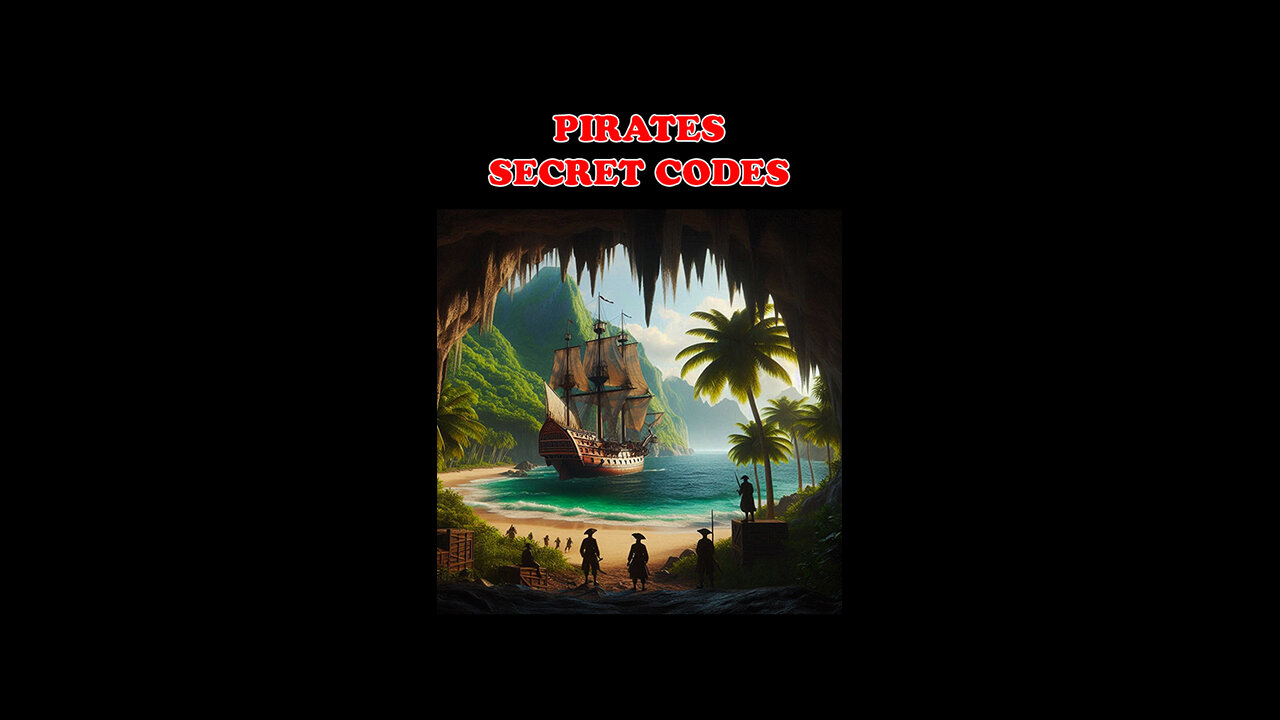Premium Only Content

Sea Pirates - What makes them Legendary?
Sea Pirates have many secrets, most still uncovered. Watch this short video clip to discover some of them.
Grab a FREE Sahara Desert ebook HERE: https://bit.ly/3PePvYU
If you enjoy it, a sub would be awesome!
VISIT US AT: https://panther-ebooks.com/ for superb ebook stories from world renowned authors and other upcoming authors.
WHAT SECRETS MADE PIRATES LEGENDARY?
In the golden age of piracy, from 1650 to 1720, secrets and strategies turned the high seas into a playground for daring rogues. Sea pirates, often seen as ruthless criminals, were also surprisingly strategic and resourceful. They formed hidden alliances, used coded language, and created intricate maps that led to untold treasures. All tools they used to stay one step ahead of powerful naval fleets and wealthy merchants.
One of the most fascinating secrets was the pirate code, or "Articles of Agreement," which each crew had to follow. Unlike the ironclad rule of monarchies or empires, the code was a surprisingly democratic contract. Captains like Blackbeard and Captain Kidd would gather their crew to vote on these rules, which governed everything from division of plunder to daily conduct and punishment for misdeeds. This code built loyalty, creating a bond that made pirates far more formidable as they fought together for a common goal. If they captured treasure, each crew member got an equal share, with larger shares set aside for those who sustained injuries in battle. Such a promise of shared wealth lured desperate men to piracy.
Pirates also had a deep understanding of the seas, particularly the Caribbean. They knew the hidden coves and islands by heart, often using these locations as hideouts from authorities or as meeting points for exchanging information. Jamaica, Tortuga, and the Bahamas were key safe havens, where pirates docked to repair ships, restock, and celebrate their latest haul. Some legends suggest that pirates buried treasure in these hidden spots, though this is more myth than fact. Instead, pirates often spent their loot quickly, investing in supplies or simply enjoying life ashore.
Pirates communicated in ways that baffled authorities. Through symbols, slang, and gestures, they conveyed secret messages. The Jolly Roger, for example, was more than a symbol of terror. Its variations could indicate a particular pirate or crew, sending messages to friend or foe. Some pirates even dressed as ordinary traders, sailing into ports unnoticed to gather intelligence or slip past naval blockades.
Deception was also essential. Many pirates mastered the art of disguise and misdirection, often flying the flags of other nations to approach enemy ships without raising suspicion. Once close enough, they would hoist the Jolly Roger and attack, catching their prey completely off guard. This tactic, known as “false colors,” was effective against ships that would otherwise flee at the first sight of a pirate ship.
And finally, pirate alliances were a secret weapon of their own. Pirates weren’t always lone wolves; captains often banded together to tackle larger targets. In 1717, for example, the pirate Black Sam Bellamy led a small fleet in capturing multiple ships off the coast of New England. These alliances were short-lived but incredibly effective, allowing pirates to swarm a target with overwhelming force.
This period of piracy was rich with deception, daring, and a code that was unique to their world. It was a complex culture that relied on secrecy as much as on brute force. Behind the mayhem lay an intricate network of shared knowledge, hidden hideaways, and a code of loyalty that bound them together, allowing these infamous figures to dominate the seas for nearly a century.
-
 LIVE
LIVE
Dr Disrespect
3 hours ago🔴LIVE - DR DISRESPECT - METAL EDEN - NEW 2025 SCI-FI FPS LAUNCH STREAM
1,552 watching -
 LIVE
LIVE
StoneMountain64
1 hour agoBattlefield's Easter Egg Phantom Project is STILL ALIVE
275 watching -

LindellTV
1 hour agoMIKE LINDELL LIVE AT THE WHITE HOUSE
2.11K -
 LIVE
LIVE
Jeff Ahern
27 minutes agoNever Woke Wednesday with Jeff Ahern
471 watching -
 13:43
13:43
The Kevin Trudeau Show Limitless
5 hours agoClassified File 3 | Kevin Trudeau EXPOSES Secret Society Brainwave Training
1.5K4 -
 1:05:33
1:05:33
Russell Brand
3 hours agoTrump Goes NUCLEAR on China - accuses Xi of CONSPIRING against US with Putin & Kim - SF627
93.7K36 -
 1:14:47
1:14:47
Sean Unpaved
2 hours agoTrey Wingo's Gridiron Grab
9.68K1 -
 13:07
13:07
Silver Dragons
20 hours agoBullion Dealer Reacts to SILVER PRICE SURGING!
1.54K5 -
 1:06:28
1:06:28
Timcast
3 hours agoTrump Admin Threatens GOP Who Vote To Release Epstein Files
129K92 -
 2:13:09
2:13:09
Side Scrollers Podcast
4 hours agoDruski/White Face Controversy + Women “Experience Guilt” Gaming + More | Side Scrollers Live
22.5K3